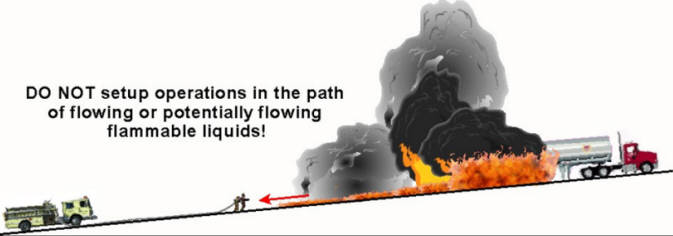What resources are responding? Engines/Personnel
What foam is on the way?
What route should I take? (consider pre knowledge of drainage areas, uphill/downhill)
What type facility or vehicle? At the gas pumps? Truck on fire I-40... what kind of truck? Tractor Trailer on fire US70.... what kind of tractor trailer.... gasoline tanker? If little information is provided during dispatch, ask for more but be aware the original callers may not have provided the info.
Known fuel type? Don't assume info is correct.... confirm on arrival
What is the weather? Wind speed/direction?, Is it raining? Temperature......95°F or 24°F?
Reports of persons trapped or injured?
Do I have a preplan for the facility?
Is the officer ready with binoculars/DOT guidebook to assess the scene on approach?
Staging? Should other/mutual aid units stage at a certain location until size-up is completed? Most likely
What size is the fire? Is it a 4' x 5' Class B fire.... grab a Class B extinguisher rated for at least 20B and put it out.
This is a constant reassessment always maintaining thought for RECEO-VS


